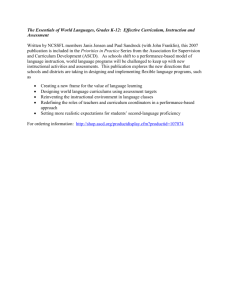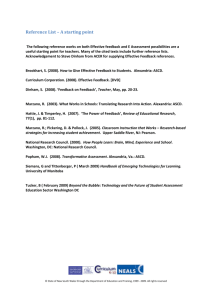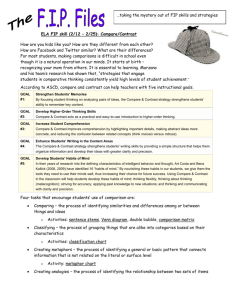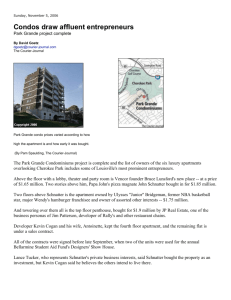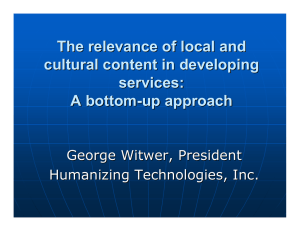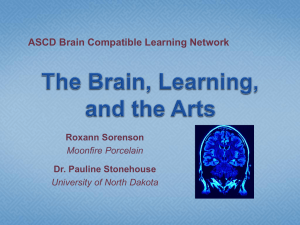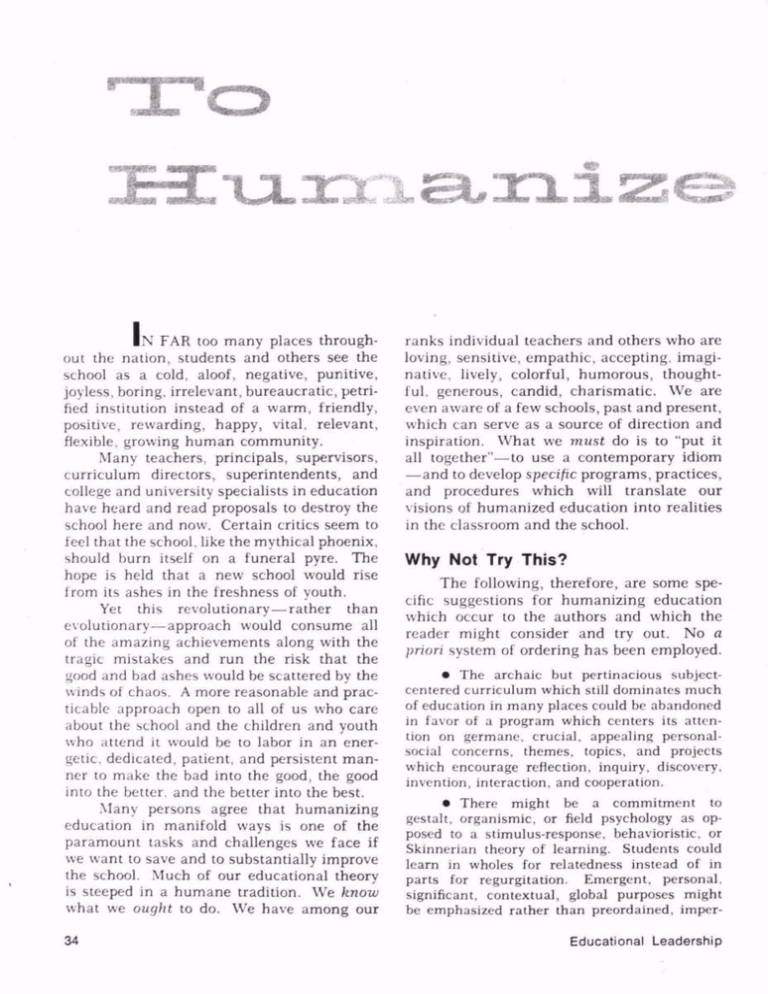
IN FAR too many places through
out the nation, students and others see the
school as a cold, aloof, negative, punitive,
joyless, boring, irrelevant, bureaucratic, petri
fied institution instead of a warm, friendly,
positive, rewarding, happy, vital, relevant,
flexible, growing human community.
Many teachers, principals, supervisors,
curriculum directors, superintendents, and
college and university specialists in education
have heard and read proposals to destroy the
school here and now. Certain critics seem to
feel that the school, like the mythical phoenix,
should burn itself on a funeral pyre. The
hope is held that a new school would rise
from its ashes in the freshness of youth.
Yet this revolutionary rather than
evolutionary approach would consume all
of the amazing achievements along with the
tragic mistakes and run the risk that the
good and bad ashes would be scattered by the
winds of chaos. A more reasonable and prac
ticable approach open to all of us who care
about the school and the children and youth
who attend it would be to labor in an ener
getic, dedicated, patient, and persistent man
ner to make the bad into the good, the good
into the better, and the better into the best.
Many persons agree that humanizing
education in manifold ways is one of the
paramount tasks and challenges we face if
we want to save and to substantially improve
the school. Much of our educational theory
is steeped in a humane tradition. We know
what we o ught to do. We have among our
34
ranks individual teachers and others who are
loving, sensitive, empathic, accepting, imagi
native, lively, colorful, humorous, thought
ful, generous, candid, charismatic. We are
even aware of a few schools, past and present,
which can serve as a source of direction and
inspiration. What we m ust do is to "put it
all together" to use a contemporary idiom
and to develop s pecific programs, practices,
and procedures which will translate our
visions of humanized education into realities
in the classroom and the school.
Why Not Try This?
The following, therefore, are some spe
cific suggestions for humanizing education
which occur to the authors and which the
reader might consider and try out. No a
priori system of ordering has been employed.
The archaic but pertinacious subjectcentered curriculum which still dominates much
of education in many places could be abandoned
in favor of a program which centers its atten
tion on germane, crucial, appealing personalsocial concerns, themes, topics, and projects
which encourage reflection, inquiry, discovery,
invention, interaction, and cooperation.
There might be a commitment to
gestalt, organismic, or field psychology as op
posed to a stimulus-response, behavioristic, or
Skinnerian theory of learning. Students could
learn in wholes for relatedness instead of in
parts for regurgitation. Emergent, personal,
significant, contextual, global purposes might
be emphasized rather than preordained, imperEducational Leadership
RAYMOND H. MUESSIG*
JOHN J. COGAN
sonal, trivial, isolated, minute behavioral ob
jectives or performance criteria.
Variety for its own sake and as a
means of touching the life of each learner one
way or another could assume more impor
tance. There might be an elimination of the
customary lecture-assign-study-recite-test syn
drome in favor of an endless repertory of activi
ties. This would provide abundant opportunities
to personalize instruction and effect ever closer
relationships among students and teachers.
Perhaps there should be at least one day
per week during which each student would
schedule himself into a host of opportunities for
experiences, some developed and guided by
teachers and others activated and implemented
by himself and/or other learners. Every teacher
might also block out periods of time, possibly
up to a full day during the week, when he would
be available to meet with students individually
and in small groups about anything concerning
them, educational or personal. A day a month
could be reserved for parent-teacher conferences
or for three-way conferences involving the par
ent, the student, and the teacher. Where needed
and appropriate, home visits during the evening
could be arranged. Through extra hours of
work, teachers could earn released time to be
used in any way that they might desire.
Another possibility would be a "familystyle" lunch one day a week in the school cafe
teria during which students could get to know
their faculty better. Or there might be an addi
tional break time in the morning or afternoon
when all members of the school community
would be present and could chat with each other
for a variety of reasons.
October 1972
Funds might be provided for the enter
tainment of learners in teachers" homes. Every
teacher might also have a little money for emer
gency aid to needy pupils. And each teacher
could have his own budget for educational
materials uniquely suited to his classes and to
individual students. Laws permitting, teachers
might decide as well not to purchase textbooks
and then to use those resources for an indi
vidualized multimedia approach.
Preschool retreats could be initiated so
that teachers and their students and/or advisees
might become more intimately acquainted. A
noninstitutional setting might alter relation
ships, and the school year could begin in a much
more relaxed, friendly manner. Face-to-face
contacts could be expanded during the school
year to include field trips, overnight and week
end campouts with students and their families,
and even extensive study tours throughout the
United States and to other countries.
Education for happiness, joy. fun. play,
recreation, and relaxation might receive in
creased attention. Life these days can be hectic,
monotonous, enervating, restrictive, and overly
task-oriented. A rich program of cocurricular
activities might be offered throughout an entire
extended school day, and students could have
some uncommitted time to follow their own
interests or just to unwind.
The school building might be opened
on week nights and Saturdays for credit and
* R aymond H. Muessig. Professor of Education.
The Ohio State University, Columbus; and John
]. Cogan. Associate Professor of Education. Uni
versity of Minnesota, Minneapolis
35
ASSOCIATION FOR SUPERVISION
AND CURRICULUM DEVELOPMENT
MEMBERSHIP APPLICATION
I ENCLOSE PAYMENT FOR THE FOLLOWING:
COMPREHENSIVE MEMBERSHIP.... $30.00 H
Includes a s ubscription to Educational Leadership t he
Yearbook, t he News Eichanie. p lus other publications
issued by ASCD during the period of membership
REGULAR MEMBERSHIP...... ......... $20.00
Includes a subscription to E ducational leadership, the
Yearbook, a nd the News Eichanfe.
:
SUBSCRIPTION ONLY... ................. $8.00
Includes eight issues of Educational Leadership p ublished
monthly October through May
CHECK HERE IF THIS MEMBERSHIP IS IN
INSTITUTIONAL FORM
PLEASE MAKE CHECKS PAYABLE TO ASCD
:..
noncredit academic, vocational, and recrea
tional opportunities for students, parents, teach
ers, and others. All persons in the school
community could feel that the school is really
theirs. People could be brought together and
make new friends. The generation gap might
even be narrowed in certain respects.
The assignments and loads of teachers
might be given more scrutiny. Teachers should
do what they do best, what they have been pre
pared to do, what they like to do. It would
appear that fewer and smaller classes for each
teacher might further humanize education. De
vices such as large-group, televised, and pro
grammed instruction may be more "efficient" in
some ways, but they seem to depersonalize edu
cation. Frequent conversations with native
speakers of foreign languages might supplement
or replace given activities in language labora
tories if humanization is a prime goal.
Letter grades and percentages might be
replaced by extensive written comments and
suggestions, conferences, and so forth. The en
tire perspective of evaluation could be altered
and all feedback personalized.
Follow-up procedures might be intro
duced so teachers could keep in touch with
former students over an extended period of time.
Students would thus have further evidence that
their teachers really care about them and would
be able to offer recommendations for educational
improvements.
There might be a comprehensive study
by everyone concerned (parents, students,
teachers, guidance counselors, administrators)
of those requirements, rules, regulations, bureau
cratic procedures, and traditions which may be
antithetical to humanized education. Perhaps
the kinds of behavior described in books such
as Joseph Heller's C atch-22 could be eliminated,
or at least reduced.
Is
§
- _,
| |
§;
Z
1 5
=5
i;
By this time, surely other possibilities
for humanizing education have occurred to
the reader. But the reader is most likely to
act if he realizes that he has something
important and very personal at stake. Mikhail
A. Bakunin, the Russian writer, expressed
this insight over a hundred years ago:
... no human individual can recognize his
own humanity, or, consequently, realize it in
life, except by recognizing it in others and by
cooperating in its realization for others. ...
D
36
Educational Leadership
Copyright © 1972 by the Association for Supervision and Curriculum
Development. All rights reserved.



